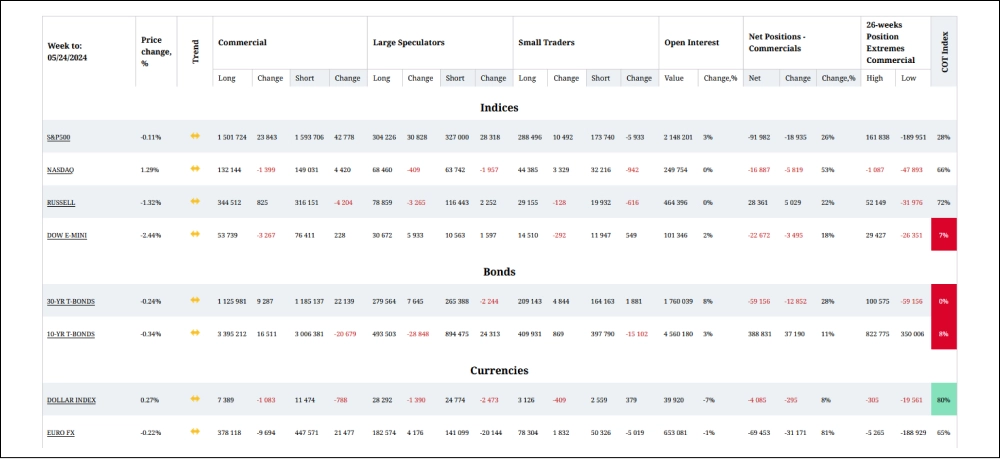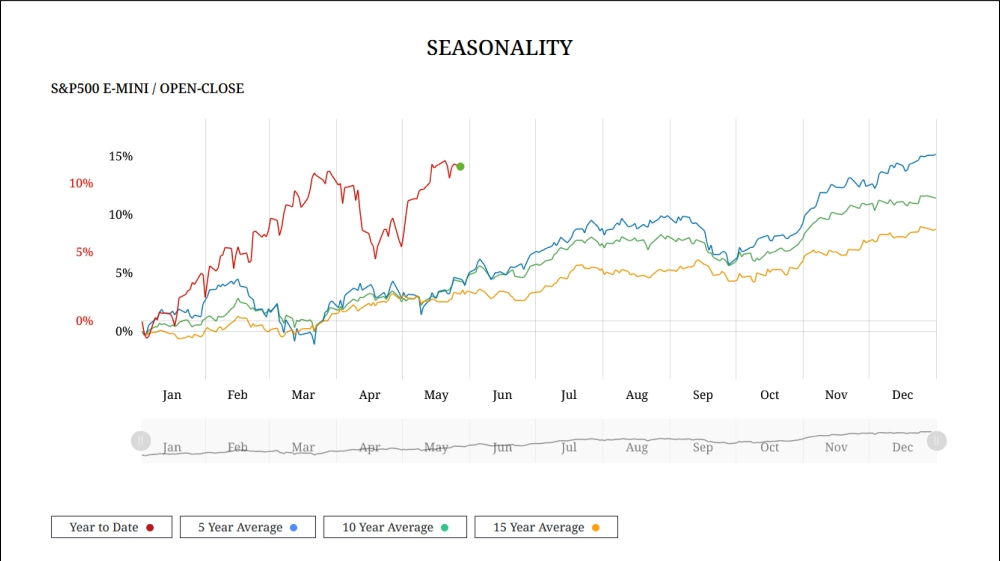My strategy in a nutshell.
I am considered a swing trader. I trade on a daily basis, and do not day trade.
I buy and sell futures contracts in about 35 of the most liquid U.S. Futures markets including:
- Commodities
- Precious Metals
- Energy
- Currencies
- Stock Market Indexes
I do not trade stocks, options, or crypto.
I base my trading decisions on:
- fundamental market data published weekly by the CFTC,
- as well as a few technical charts with a handful of indicators.
I hold up to 4 open positions for anywhere from 3 to 20 days. Some weeks I hold cash instead of open positions. I share specific stop loss and profit targets as each position progresses. Risk and money management is foundational to my success and baked into my trading strategy.
I start work on Sundays, preparing the Weekly Trading Plan and the markets to watch where I expect opportunities to profit. I share the trading plan with my members, and enter any bracket orders for the first day.
At the end of each trading day, I alert my members of the actions I will be taking, whether I am entering a trade, exiting a trade, deleting an order, or moving my stop loss or profit target. It takes only 15 minutes a day to update my portfolio.
By Friday, the market has revealed its movements and with any bracket orders in place, I take Friday and Saturday off to spend with my family and recharge my batteries.
Fundamentals.
I analyze the CFTC Commitment of Traders Report each week to see what the big players are doing in the market. The observation of Big Players provide me the information about possible upcoming trends in the U.S. Futures markets.

For analysing the COT data, my team puts the cot data into a weekly chart. The COT Index indicator I created shows us when the big players are extreme buyers or sellers.
I then analyze the seasonal tendencies, especially the commodities markets that typically follow the seasonal price movements. I use our own created seasonality tool to find upcoming strong price movements in each market.
 Technical Analysis.
Technical Analysis.
After I select the trend markets by using COT data and seasonal tendencies I switch to a daily chart and start to use technical analysis to find the right timing to enter the trending markets. I use the trend structure to determined trend changes in direction of fundamental data and use very few technical indicators to confirm the right timing. I open a long or short position based on price action patterns.
 Risk and Money Management.
Risk and Money Management.
I always use an active stop loss. The protection of the capital is the most important thing. You see that in my performance, my drawdown was never more than 10% in the last 9 years.
After I got my entry pattern I set a stop loss and price target by using basket orders. Usually I risk 2% on average per trade of my trading account. During a drawdown I decrease until 1%, and in times of all-time highs, I might increase up to 4% per trade.
 Strategy Breakdown.
Strategy Breakdown.
When you review my performance, you will see that I list several different strategies. I use different strategies on different accounts based on the dollar size of the account, the movement of each market, and to diversify my overall portfolio. This helps to mitigate risk and improve performance. Each strategy also provides a stepping stone to the next level of trading for my members.
 COT-1 Strategy
COT-1 Strategy
For any size account traders, I developed what I call the COT-1 Strategy. It was the first and easiest to follow. It performs better when a particular futures market is moving in a range, which is about 80% of the time for that market. I post new trades for this strategy to all my followers. Based on the size of your trading account, you can either follow me into the trade with the appropriate number of futures contracts, or skip the trade if it’s risk size it too large for your real money account. If you are using a demo account, you can take every trade I make for learning purposes.
 StartUp Account
StartUp Account
The same COT1 Strategy but a small account size. For small account traders, I select futures markets that have lower contract size so that the dollar risk remains within my written risk management rules. Some markets have very active micro contracts which cost 1/10th of the regular size contracts my followers and I trade on our larger accounts. You will see that I started a new account for trading on January, 2023 for small traders. I have built small accounts up over the years six times, so if you are a small account trader, sign up and follow me as I grow this new StartUp account.
 COT-2 Strategy
COT-2 Strategy
For any size account traders, I developed what I call the COT-2 Strategy. It is more aggressive and there is more to keep track of. It performs better when a particular futures market is trending. I have found from experience that many of my newer members have trouble following this strategy without first mastering the COT-1 Strategy. For this reason, I only post trades for my COT-2 strategy for those seasoned traders that have had success with the StartUp and COT-1 Strategies.
Please take a look at my performance. I update it daily.

